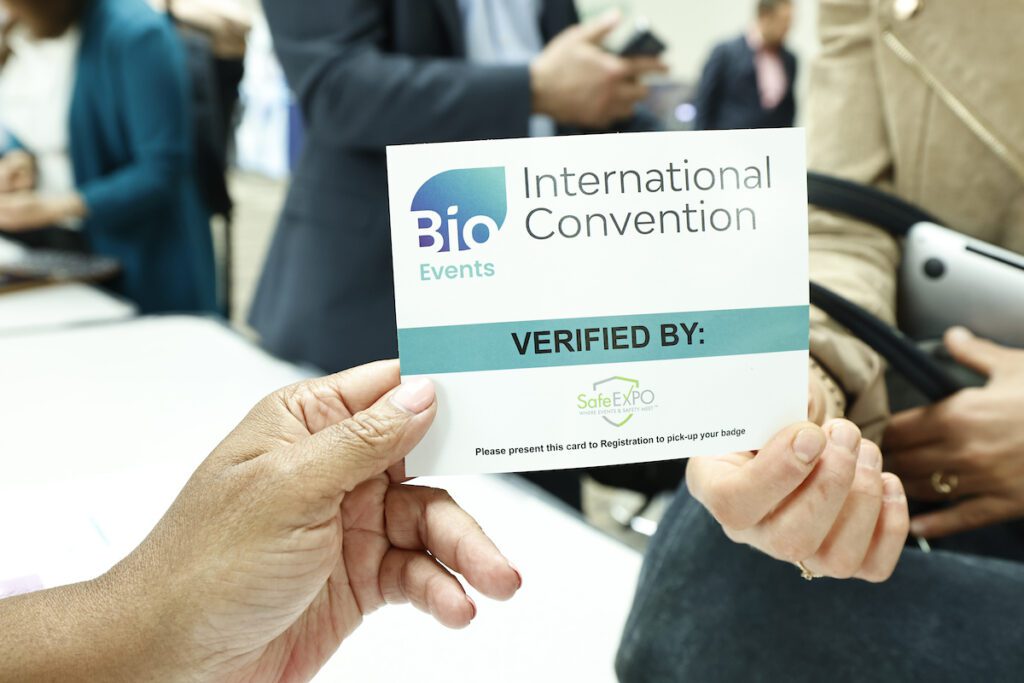The COVID-19 pandemic shook up the global health care system in ways that were more unique and acute than in years past. Yet, the biotech industry learned a lot of lessons about what works and what doesn’t when it comes to getting an entire population vaccinated and boosted.
Phyllis Arthur, Vice President of Infectious Diseases & Diagnostics Policy at the Biotechnology Innovation Organization (BIO), opened the “Vaccine Innovation and the Future of Life-Course Immunization” panel by charging panelists to discuss the lessons of COVID, both positive and negative.
Moderator, Nicholas Diamond, the Director of Crowell & Moring, LLP, led the conversation with:
- Angela Shen, MPH Captain (Retired) of the US Public Health Service;
- Alexandra Bhatti, the Director of US Vaccine Public Policy for Merck;
- Richard Hughes IV, Vice President of Public Policy at Moderna; and
- Charley John, the Director of U.S. Public Policy at Walgreens.
“It comes down to three pillars: partnership with communities, providing education and information, and ensuring a variety of access points,” said Charley John of Walgreens.
“I think we’re in exciting times,” added Alexandra Bhatti of Merck. “COVID accelerated innovation, so you’re seeing additional innovative technologies being developed for prevention and across the life course.”
Lessons on access to vaccines
And indeed, despite the pitfalls of the pandemic, the industry learned a great deal.
On the pharmacy side, questions around access and affordability were front and center. “It’s very difficult to walk down the block without seeing a pharmacy,” said John. “And in those pharmacy windows patients undoubtedly see signs that say, ‘Get your vaccine here.’ And in many rural areas, pharmacies are the only place that people can get easily vaccinated.”
Much of John’s focus was around regional access to vaccines. He acknowledged the fact that the rural and urban populations faced unique challenges that needed to be met in concerted, engaged, and creative ways.
“Ninety percent of the American population is five miles from a pharmacy,” he said. “But if you don’t have a car or access to public transportation, then those five miles become insurmountable.”
Walgreen addressed this issue with the development of a vaccine mobile: “We had to meet people where they were at,” said John. “We literally knocked on people’s doors to talk to them about getting vaccinated, and then when they said they were ready, we said, our mobile vaccine bus is just across the street. ‘Vaccinations are here! Come and get ‘em!’”
Access was further compounded by affordability in both rural and urban populations. “When you do all of this work to convince someone with access and affordability issues to get vaccinated and then you hit them with a $50 copay,” John said, “They’re going to say, ‘No way.’ And they are going to walk out the door and not come back. You’ve just lost that patient completely.”
The role of the government in vaccine access
Another one of the major pain points when it comes to making sure people are vaccinated is the role of Medicaid. “We have huge issues regarding Medicaid,” said Moderna’s Richard Hughes IV. “There are coverage inconsistencies across states, issues with reimbursements for vaccines, and many states that still haven’t expanded Medicaid for their constituents. Those issues are going to be a consistent barrier to people getting vaccinated.”
The government’s role in vaccine distribution and documentation is part and parcel of the affordability and access conversation.
“There is a consistent issue with the fact that there are 64 vaccine registries that for the most part, do not talk to each other,” said Angela Shen of the U.S. Public Health Service.
“The system for vaccinating children versus adults is fundamentally different,” reminded Shen. While there is a vaccine requirement system for school-aged children, there is effectively nothing for adults.
What about vaccine hesitancy?
This further exacerbates yet another vaccination issue: vaccine hesitancy.
“The pandemic has taught us that we need to grow our table,” said Alexandra Bhatti of Merck. “We need to bring very diverse voices to the table to help address some of the issues around education, equity, and access. We need to talk about health education in communities and the role that community leaders play in education and getting people vaccinated.”
“The hesitant or reluctant communities are not a lost cause,” asserted John. Yet, successfully campaigning around vaccinations came down to working with the movable middle. “There are communities who will get vaccinated no matter what,” said Shen, “and communities who will always out and out refuse. But there is a much larger community of people in the movable middle. That is who we need to work with and education to get ourselves to the levels of vaccine saturation we want to be at.”




